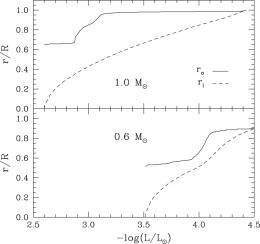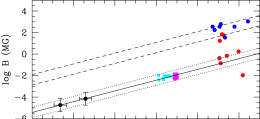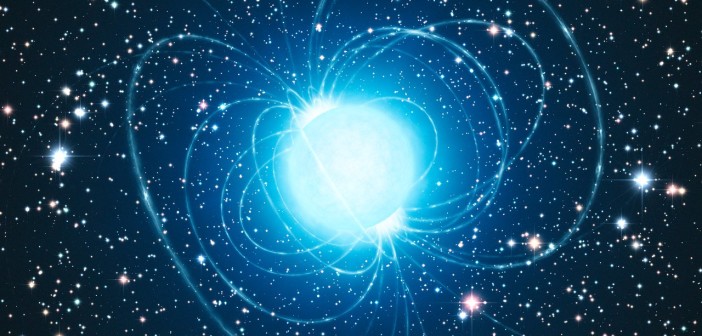White dwarfs, the compact remnants left over at the end of low- and medium-mass stars’ lifetimes, are often found to have magnetic fields with strengths ranging from thousands to billions of times that of Earth. But how do these fields form?
Multiple Possibilities
Around 10–20% of white dwarfs have been observed to have measurable magnetic fields with a wide range of strengths. There are several theories as to how these fields might be generated:
- The fields are “fossil”.
The original weak magnetic fields of the progenitor stars were amplified as the stars’ cores evolved into white dwarfs. - The fields are caused by binary interactions.
White dwarfs that formed in the merger of a binary pair might have had a magnetic field amplified as a result of a dynamo that was generated during the merger. - The fields were produced by some other internal physical mechanism during the cooling of the white dwarf itself.
In a recent publication, a team of authors led by Jordi Isern (Institute of Space Sciences, CSIC, and Institute for Space Studies of Catalonia, Spain) explored this third possibility.
Dynamos from Crystallization

The inner and outer boundaries of the convective mantle of carbon/oxygen white dwarfs of two different masses (top vs. bottom panel) as a function of luminosity. As the white dwarf cools (toward the right), the mantle grows thinner due to the crystallization and settling of material. [Isern et al. 2017]
The crystallized phase of the white dwarf is oxygen-rich — which is denser than the liquid, so the crystallized material sinks to the center of the dwarf as it solidifies. As a result, the white dwarf forms a solid, oxygen-rich core with a liquid, carbon-rich mantle that’s Rayleigh-Taylor unstable: as crystallization continues, the solids continue to sink out of the mantle.
By analytically modeling this process, Isern and collaborators demonstrate that the Rayleigh-Taylor instabilities in the convective mantle can drive a dynamo large enough to generate the magnetic field strengths we’ve observed in white dwarfs.

Magnetic field density as a function of the dynamo energy density. The plots show Earth and Jupiter (black dots), T Tauri stars (cyan), M dwarf stars (magenta), and two types of white dwarfs (blue and red). Do these lie on the same scaling relation? [Isern et al. 2017]
A Universal Process?
This setup — the solid core with an unstable liquid mantle on top — is exactly the structure expected to occur in planets such as Earth and Jupiter. These planets’ magnetic fields are similarly thought to be generated by convective dynamos powered by the cooling and chemical separation of their interiors — and the process can also be scaled up to account for the magnetic fields of fully convective objects like T Tauri stars, as well.
If white-dwarf magnetic fields are generated by the same type of dynamo, this may be a universal process for creating magnetic fields in astrophysical objects — though other processes may well be at work too.
Citation
Jordi Isern et al 2017 ApJL 836 L28. doi:10.3847/2041-8213/aa5eae


1 Comment
Pingback: making magnetic fields in WDs